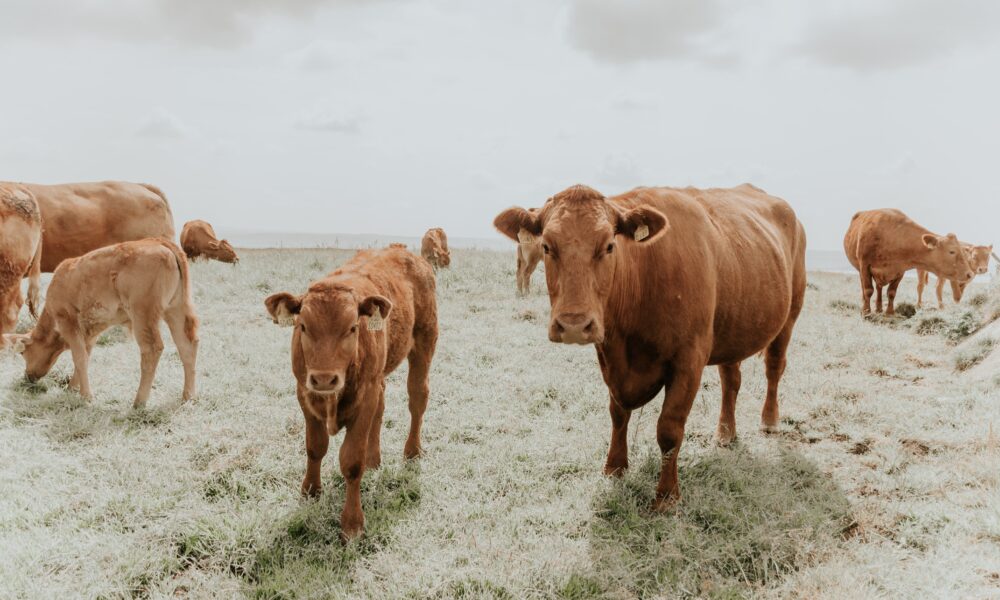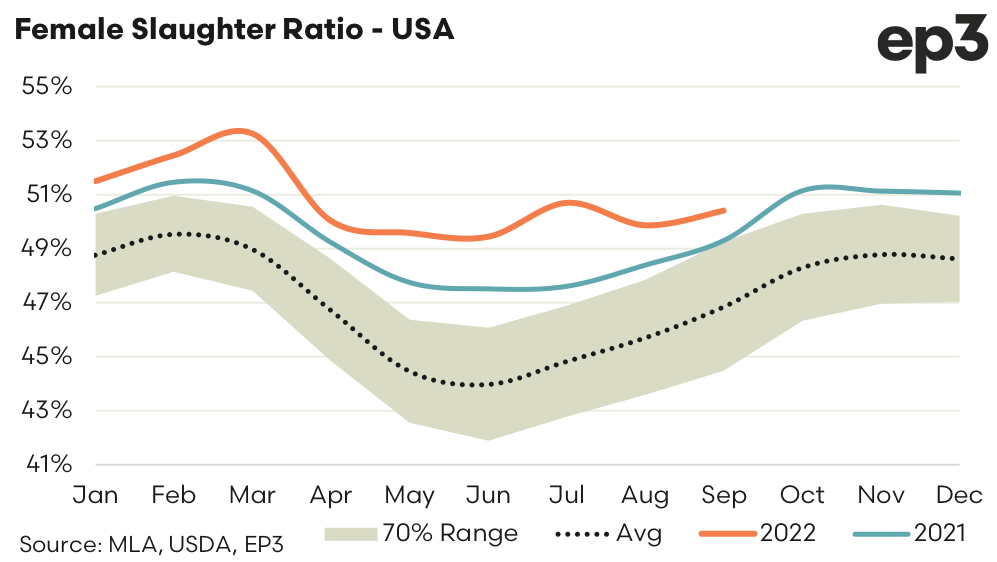Culling in the name of (USA Edition)

The Snapshot
- Historically in the USA an FSR above 48% has been consistent with herd liquidation, meanwhile an FSR under 48% means the herd is being rebuilt.
- Currently the annual FSR in the USA is at 50.8%, which is the second highest level this ratio has been on an annual basis since records began in 1986.
- A comparison of the annual FSR to the annual herd change in the USA shows that and FSR nearer to 51% would be consistent with a decline in the herd of around 3%.
The Detail
It’s been a few months since we checked in on the status of the beef herd liquidation in the USA using our most reliable indicator of herd change, the female slaughter ratio (FSR). For the uninitiated, the FSR is a measure of female cattle slaughter as a proportion of total slaughter. In the USA we can get a glimpse of this on a monthly basis, so it can tell us where in the cattle cycle we are, in terms of herd liquidation or rebuild, based on the level of the ratio.
A scatter plot of the annual FSR in the USA versus US herd change since 1986 shows how well this ratio can predict if the herd numbers will go up or down each year. In the USA an FSR above 48% is liquidation territory, meanwhile an FSR under 48% means the herd is being rebuilt.
Currently, in 2022 the annual FSR in the USA is at 50.8% (as at the end of Sept) which is the second highest this ratio has been on an annual basis since records began in 1986. In 1986 the annual average FSR in the USA was 51.1% and that year the US herd declined by 3.8%.
A look at the monthly pattern for the US FSR this year shows that we haven’t dipped under last years trend all season, with the FSR each month running well above the average pattern and much more than would be expected given the normal range we often see in this indicator (as outlined by the grey shaded 70% range boundary).
Its not uncommon to see the FSR reach a low for the season during the northern hemisphere summer in the middle of the year but this year the FSR remained stubbornly elevated barely going under 50%. September has seen the FSR begin to rise again lifting to 50.4% for the month.
A comparison of the annual FSR to the annual herd change in the USA shows that and FSR nearer to 51% would be consistent with a decline in the herd of around 2.5% to 3%. The United States Department of Agriculture (USDA) herd census shows that from 2021 to 2022 the herd declined 2% from 101 million head to 98.8 million head, as at July 2022.
Based on an annual average FSR of nearly 51% this year and the high level of herd liquidation currently underway we could see a drop in the herd this year of a further 3% bringing the herd in mid 2023 to about 95.8 million head.



